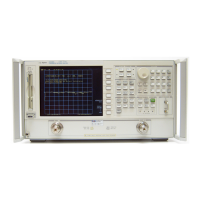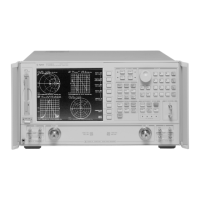13-16 Programmer’s Guide
SCPI Error Messages
Device-Specific Errors
Table 13-3 SCPI Device-Specific Errors
Error
Number
Error Description
−300 Device-specific error — This is the generic device-dependent error for
devices that cannot detect more specific errors. This code indicates only
that a Device-Dependent Error has occurred.
−310 System error — Indicates that some error, termed "system error" by the
device, has occurred. This code is device-dependent.
−311 Memory error — Indicates that an error was detected in the device's
memory. The scope of this error is device-dependent.
−312 PUD memory lost — Indicates that the protected user data saved by the
*PUD command has been lost.
−313 Calibration memory lost — Indicates that nonvolatile calibration data used
by the *CAL? command has been lost.
−314 Save/recall memory lost — Indicates that the nonvolatile data saved by the
*SAV? command has been lost.
−315 Configuration memory lost — Indicates that nonvolatile configuration data
saved by the device has been lost. The meaning of this error is
device-specific.
−330 Self-test failed.
−350 Queue overflow — A specific code entered into the queue in lieu of the code
that caused the error. This code indicates that there is no room in the queue
and an error occurred but was not recorded.
−360 Communication error — This is the generic communication error for
devices that cannot detect the more specific errors −361 through −363.
−361 Parity error in program message — Parity bit not correct when data
received, for example, on a serial port.
−362 Framing error in program message — A stop bit was not detected when
data was received, for example, on a serial port (for example, a baud rate
mismatch).
−363 Input buffer overrun — Software or hardware input buffer on serial port
overflows with data caused by improper or nonexistent pacing.

